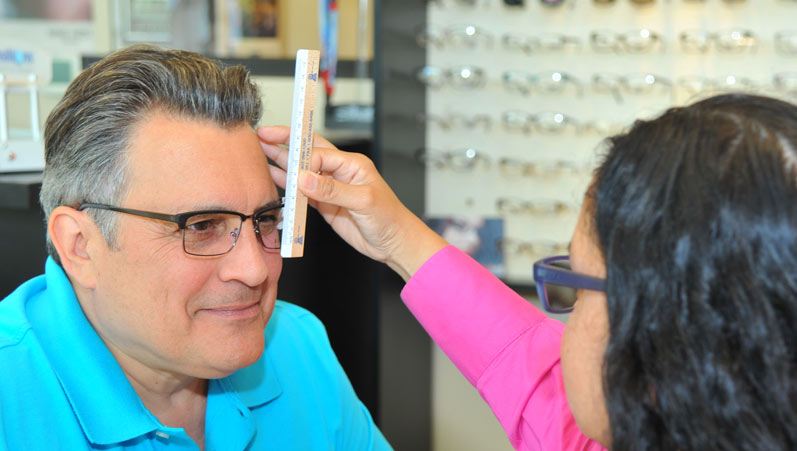Lens Technology

Lens Technology
EyeCare Optical offers you a number of lens options with your new glasses.
Optical lens technology has progressed dramatically in recent years to make glasses lighter and more comfortable while also making them tougher and more resistant to damage.
New technologies can also help reduce glare, adjust automatically to changes in light, and even shield your eyes from others.
We will help you file insurance for all glasses and contact lens purchases.
Among the lens options we offer are:

Varilux
Progressive lenses that utilize digital, free-form technology for multi-vision options.

Crizal Coatings
New anti-reflection lenses to reduce glare. We now have Crizal Sapphire, nearly-invisible lenses that minimize glare and reflections

Blu-Blocker
Protects your eyes from harmful, retina-damaging blue light.

Transitions Color Changing Lenses
heck out the new the Signature VII with Chromea7 technology, which are response to over 200 different lighting conditions and get darker than other lenses on bright, hot days.
We also offer computer glasses and other specialized lenses.
For contact lens wearers, our doctors are experienced in complicated contact lens fittings, and can help guide you to lenses that provide the optimum comfort and vision performance.
We will also help you file insurance for all glasses and contact lens purchases.
Types of Lenses
A lens can be made into many prescriptions.
Single Vision Lenses are the common single vision lens that corrects distance.
People with presbyopia (normal loss of near focusing ability occurring with age, typically after age 40), not wanting a bifocal may request a near vision pair of glasses to perform certain tasks, such as computer screen use only (intermediate).
A prescription can be made into either distance or near vision only. Measure the distance at which you want to perform a task in order for the optometrist to measure/assess the correct lens power you need.
Lined Bifocals (segmented multifocal lenses) have two different powers in the lens. Each power is located in a distinct area of the lens bordered clearly by a visible demarcation line. The top of the lens usually has the distance correction, and through the segment it adds on power to give the near power.
Trifocal lenses, a multifocal lens has three areas of power, each area differentiated clearly by a visible demarcation line. The top of the lens has the distance correction, the first line gives the intermediate power which is typically half of the add power. The second line has the entire near add power.
PAL’s, progressive addition lenses, also known as no line multifocal lenses, are used as an alternative to a segmented multifocal lens. Progressive addition lenses have the distance power in the upper half of the lens and the lens power gradually increases as the wearer looks down and inward to view intermediate and near objects. PAL lenses make an all-in-one type of pair of glasses, able to see anything at any distance.
UV protection is important because Ultraviolet (UV) radiation has increased in recent years, and affects everyone over time – causing cataracts, macular degeneration, pterygium, etc. A number of lens options protects eyes against UV radiation. Some lens have the UV filter directly in the lens material, some have a UV filter in the coating, some have it dyed-in, and other coatings include it as well.
UV protection coating is included in all eyewear sold at EyeCare Optical.
Scratch resistant coating: Plastic lenses scratch easier than glass. Manufacturers have developed scratch resistant (scratch resistant, not scratch proof) coatings that increase surface hardness to prevent scratches.
Tints are available for ophthalmic lenses in brown, pink, yellow, green, blue, and grey which is the most popular tint for sun protection because of its evenness of transmission through the whole visible spectrum (does not change color perception – simply darker). Tints are also available as a gradient coating with the darkest tint on the top of the lens, gradually lightening toward the bottom.
Anti-reflective coating (AR), a thin, clear layer applied to the surface of the lens reduces unwanted reflections from the lens, increases the amount of light that passes through the lens to the eye and can improve night vision by reducing star-like flare from lights.
Backside AR, an anti-reflective coating added onto the backside of sunglass lenses prevents glare from the sides of the lens and is recommended for any polarized lens to optimize optics.
Blue Blocking lenses is an additional lens coating that blocks the blue light produced by computer/cell phone screens or blue light from other light sources that can reduce eye strain from digital devices and decrease the risk of macular degeneration.
Transitions/Light Reactive lenses is a lens filter that changes its transmission of light when exposed to UV radiation. The advantage is wearing glasses that provide a tint immediately when walking outside – no need to swap out your glasses for sunglasses.
Polarized lenses are a filter that added to a sunglass frame reduces the glare from outside sources. These filters typically come as the darkest tint colors in both grey and brown. Advantages are to decrease driving fatigue and increase driving safety by reducing glare, reduce reflections over the surface of water and provide full UV protection.
New Patients
EyeCare Optical is always glad to accept new patients. LEARN MORE…
Drop in or call us now to set up your appointment. Today! CLICK HERE TO SCHEDULE!
Eyecare Optical | Orlando is proudly powered by WordPress
